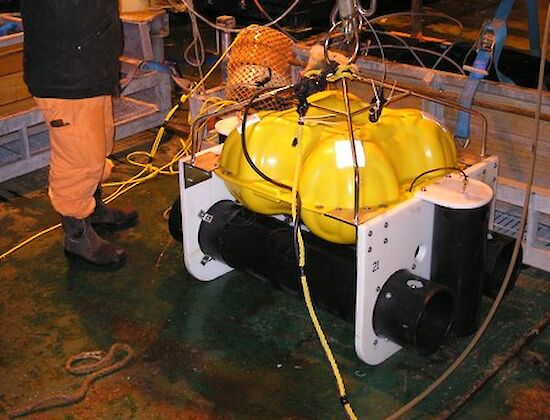Acoustics
Acoustic study is particularly well suited to overcome many of the difficulties of working in harsh Antarctic waters, and has enormous potential to help understand the role of cetaceans in the Antarctic ecosystem. Many cetaceans are highly vocal and produce species- and sometimes stock-specific sounds. Underwater sound travels large distances with whale calls often detected to ranges of tens or even hundreds of kilometres. Acoustic surveys of cetacean habitats, therefore, are a powerful means of identifying the species present, locating and tracking individuals, identifying stocks from regional dialects, and determining patterns of seasonal distribution and relative abundance.
The acoustics research program of the Australian Marine Mammal Centre uses two sets of technologically advanced acoustic techniques to study Southern Ocean marine mammals: vessel-deployed sonobuoys and long-term moored acoustic recorders.
The sonobuoys are deployed along vessel transects in the Southern Ocean, transmitting real-time underwater sound back to the vessel where it can be monitored and recorded. This technique permits very large geographic regions to be acoustically surveyed over relatively short times for the presence and relative abundance of vocalizing whales. These results can then be meshed with concurrently collected data on oceanographic and biological variables from vessel-based surveys and remote satellite sensing, leading to a larger understanding of the role of marine mammals in the Southern Ocean ecosystem.
Long-term moored recording devices are also used conduct year-round acoustic surveys in targeted locations. These instruments are anchored to the sea-floor for periods of up to a year recording underwater sound. This enables detection of calling animals when sighting surveys are not feasible and permits year-round acoustic surveys of regions that are normally inaccessible due to weather or ice cover. Upon recovery, the data can be analysed to assess the timing of migrations, periods of peak abundance, and seasonality and overlap of different species presence.
Brian Miller leads the acoustic research within the Australian Marine Mammal Centre.


